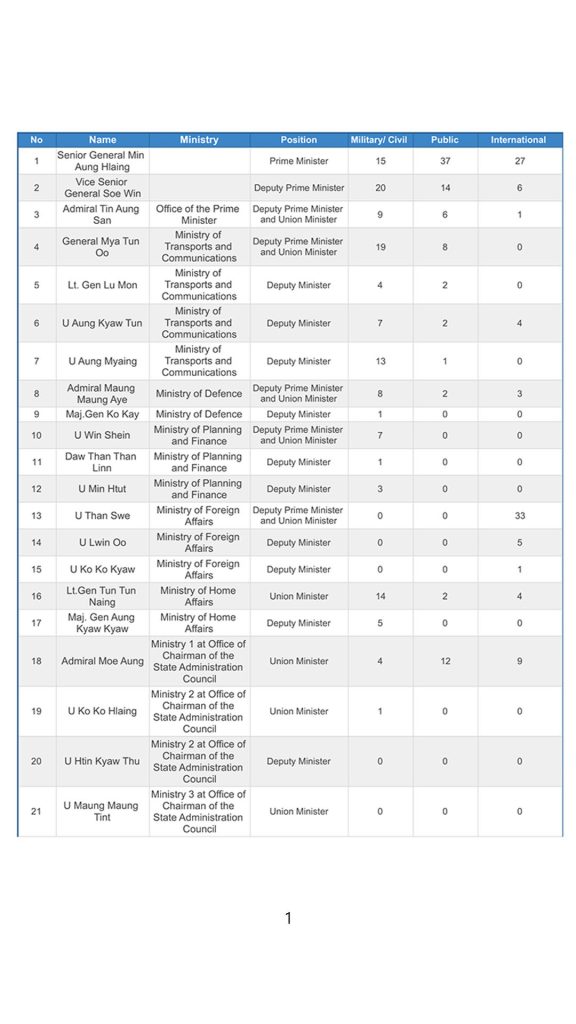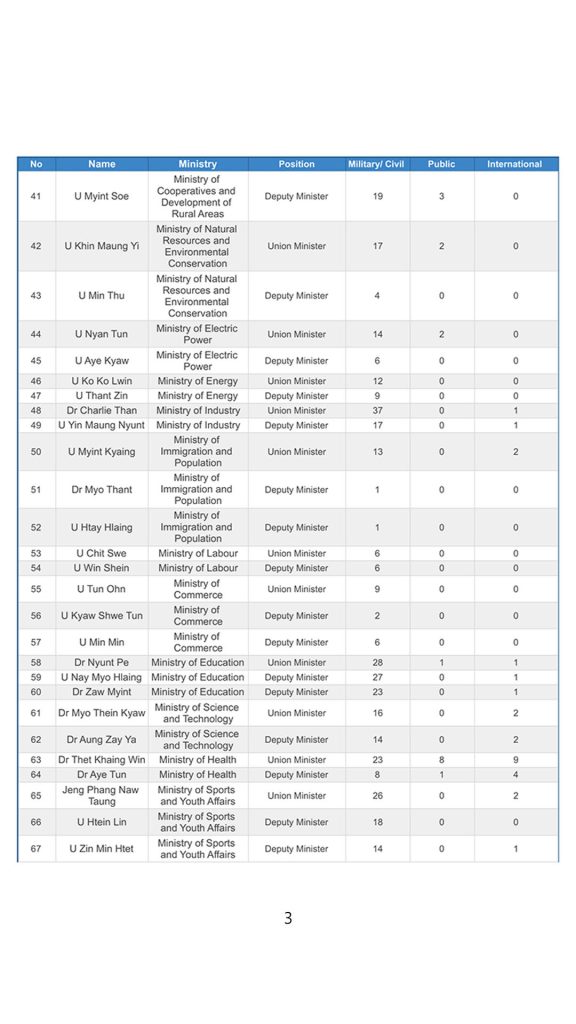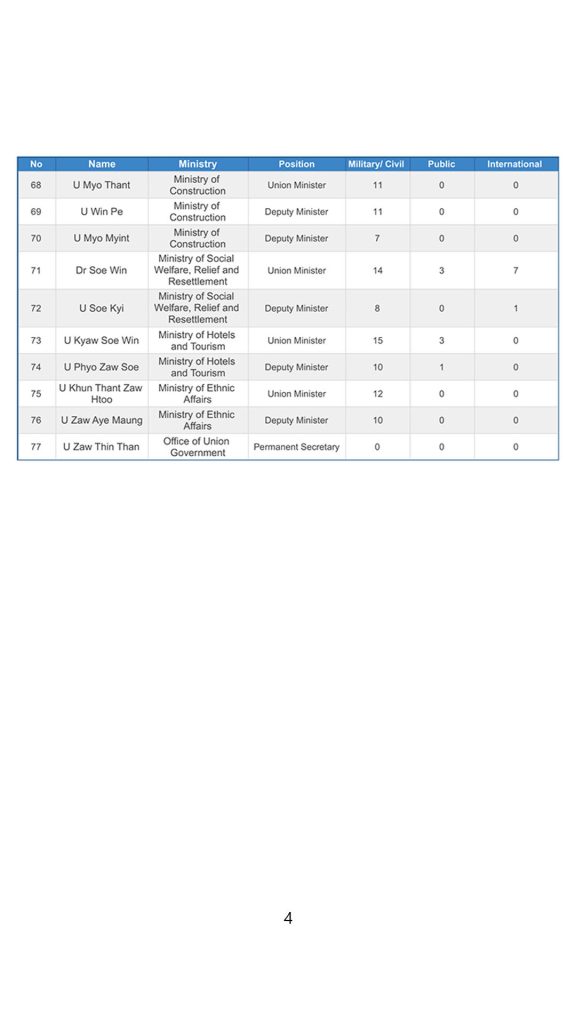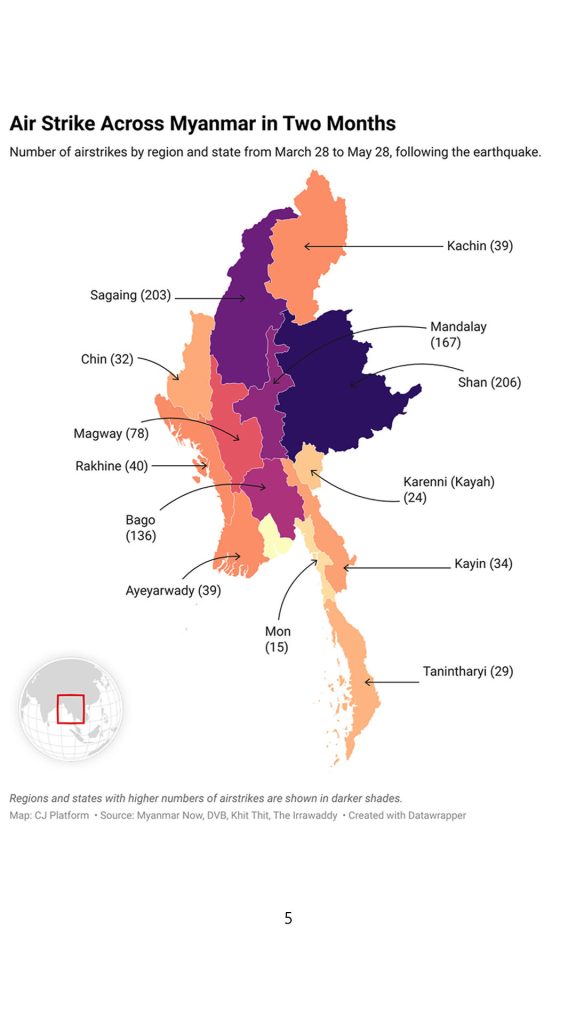It’s about Rohingya Crisis is a Geopolitical ; Topic A Tragedy Hijacked by Great Power Politics

Introduction
On March 28, 2025, a powerful earthquake measuring 7.7 on the Richter scale struck near Sagaing City in the Sagaing Region of Myanmar. It was recorded as the most severe tremor in Myanmar’s history in 186 years. The military council named it the Mandalay Earthquake, but the people called it the Sagaing Earthquake. The earthquake caused widespread damage across the country, including in the Sagaing Region, Mandalay Region, Nay Pyi Taw Council Area, and Shan State.
On the same day, the military council declared a state of emergency in the affected areas of the Sagaing Region, Mandalay Region, Nay Pyi Taw Council Area, Magway Region, Northeast Shan State, and Bago Region under the National Disaster Management Law.
Following the declaration of the state of emergency, junta chief Senior General Min Aung Hlaing officially appealed for international assistance. Since then, the military council has been attempting to engage more with the international community, citing the Sagaing earthquake, according to reports in the military council’s newspapers.
Part (1)
Damage caused by the earthquake
The powerful earthquake affected 374 wards, 944 village tracts, 162,167 households in 2,081 villages, and a total population of 506,069 people, with 3,739 deaths, 68 missing persons, and 5,104 injured persons, the military council announced on May 29.
Damage included 51,210 houses, 431 road construction works, (103) bridges, (83) railway sectinos, (11) railway bridges, (6,730) mobile communication stations, (10) power lines, (3,435) power poles, (594) irrigation canals, (6) embankments, (11,338) departmental buildings, (384) hospitals, (364) clinics, (166) ancient buildings and museums, (2,409) basic education schools, (72) advanced education schools, (90) private schools, (6,469) pagodas, (5,588) monasteries, nunneries and other religious buildings, (344) private factories, (78.5) acres of crops, The military council announced on May 29 that 133,700 animals were affected and the initial damage cost a total of 3,804.549 billion kyats.
The above information is based on statements from the military council. Due to disruptions in internet connectivity, restrictions on freedom of information, and communication difficulties, it is expected that there may be more casualties on the ground.
Donations to the Military Council
Following the earthquake, the military council held two fundraising events to aid those affected and to support reconstruction efforts.
The first fundraising event, held on April 1, reported that it had received 112.87 billion kyats in cash and 12.4 billion kyats in goods. On May 29, it announced that it had received 131.53 billion kyats and 2,314,900 US dollars.
According to independent and reliable news sources, these donations represent only direct contributions to the military council and do not include any mutual aid efforts by the people.
How Did the Military Council Act in the Wake of the Major Earthquake?
According to reports from the military council’s newspapers covering the two-month period from March 28 to May 28, junta chief Senior General Min Aung Hlaing was able to establish good relations with countries such as China, Russia, India, Pakistan, Malaysia, Nepal, and Thailand within just two months, using the earthquake as an opportunity. He was also able to forge stronger ties with the international community, including attending the sixth meeting of the Bay of Bengal Initiative for Multi-Sectoral Technical and Economic Cooperation (BIMSTEC) held in Bangkok, under the rotating chairmanship of Thailand, on April 4.
Moreover, on April 17, he met privately with the Prime Minister of Malaysia, Mr. Anwar Ibrahim, who is the rotating chairman of ASEAN, in Bangkok, Thailand, to discuss earthquake relief efforts and cooperation between ASEAN and Myanmar, according to military council reports.
On May 9, the military chief also attended the 80th anniversary of the victory in the Great Patriotic War in Moscow, Russia. Later, the military council announced that he had a separate meeting with Chinese President Xi Jinping during the ceremony, indicating that the trip was a good opportunity to build closer relations with China and Russia, the main allies of the military council.
The military leader has focused on international relations. From the day of the earthquake until May 28, he met with earthquake-affected people and businessmen 37 times, while he met with the military and its subordinate departments 15 times, and with international diplomats and foreign governments 27 times.
The vice-chairman of the military council, Lieutenant General Soe Win, held 14 meetings with businesspeople, 20 meetings with the military and its subordinate departments, and only 6 meetings with international diplomats and foreign governments.
Did the Myanmar Military Council Really Carry Out Relief Efforts for the People?
There were many questions about the administration under the military council after the earthquake. Dr. Soe Win, the Union Minister for Social Welfare, Relief and Resettlement—who was the most important figure during the disaster—had only three interactions with the public and met with military and departmental personnel 14 times. Despite having just three visits to help earthquake-affected people, he met international diplomats and foreign government officials seven times.
Similarly, U Soe Kyi, the Deputy Minister for Social Welfare, Relief and Resettlement, did not meet with the public at all. Instead, he met with defense and departmental personnel eight times and interacted with international organizations only once.
However, U Than Swe, who is also the Union Minister for Foreign Affairs and Deputy Prime Minister, met with international diplomats and foreign government officials 33 times. Deputy Minister U Lwin Oo, under his command, met with international diplomats and government officials five times, while another deputy minister, U Ko Ko Kyaw, met with international diplomats and officials once.
Moreover, the junta chief appointed Union Ministers and Deputy Ministers under the names of Ministries (1), (2), (3), and (4) in his government, under the Office of the Chairman of the State Administration Council. Yet, within two month after the earthquake, only the Union Ministers of Ministries (1) and (2) were active, while the Union Ministers and Deputy Ministers of Ministries (3) and (4) were completely inactive for two month.
In the two months following the earthquake, the members of the military council and the government they formed—including the Union Minister, Deputy Union Minister, and Secretaries—met with the public a total of 126 times but met with military and departmental personnel 758 times. They also met with international diplomats and foreign government officials 153 times.
The above information is compiled from the military council-controlled newspapers Myanma Alin, The Mirror, and Myawaddy, as well as information broadcast on MRTV from March 28 to May 28.
The military council often keeps its meetings with international organizations secret from the public, but it always publishes its meetings with the public. Therefore, in the two months following the earthquake, the members of the military council and the government they formed—including the Union Minister, Deputy Union Minister, and Secretaries—met with the public a total of 126 times, but the number of international meetings with the military and civil departments may be higher than the current information suggests.
The activities of the military council government for one month can be seen in Figures (1), (2), (3) and (4).

Figure (1) Summary of the two-month activities of the military council (Military/Civil refers to military responsibilities or departmental functions. Public refers to non-departmental matters related to the public sector. International refers to interactions with other countries.) References: Myanmar Light Newspaper, The Mirror Newspaper, Myawaddy Newspaper, MRTV, Wikipedia

Figure (2) Two-Monthly Activities of Military Council in Brief

Figure (3) Two-Monthly Activities of Military Council in Brief

Figure (4) Two-Monthly Activities of Military Council in Brief
What the People Have Received
In Mandalay and Sagaing, the military council organized markets that promised to sell construction materials needed for post-earthquake reconstruction at low prices. However, the sale of cement bags—a major need of the people—was limited at these markets. Earthquake-affected people are also having to buy palm leaves at a high price of 1,000 kyats per sheet to build temporary shelters. Independent and reliable news outlets report that some earthquake-affected people in Sagaing are still living in temporary shelters.
Findings
The earthquake that struck on March 28 not only affected residential areas but also had a severe impact on Nay Pyi Taw, the administrative hub of the military council. The military council’s indifference to the plight of the people after the earthquake is evident from interviews with residents. Additionally, the military council has been more focused on international relations in response to the earthquake.
During the reconstruction period, the military council has prioritized the rapid rebuilding of damaged office buildings and staff housing in Nay Pyi Taw, while failing to provide effective assistance to people trying to clear the rubble of their homes, according to independent and reliable news sources.
Part (2)
What Is the Military Council Doing Without Providing Assistance to the People?
While the military council’s second leader, Lt. Gen. Soe Win, was busy supporting the coup leader’s international expansion, he also served as the chairman of the National Disaster Management Committee and was officially responsible for earthquake relief.
During two months of international outreach, he met with international relief organizations involved in earthquake assistance, as well as representatives of the United Nations Office for the Coordination of Humanitarian Affairs (UNOCHA) and the International Committee of the Red Cross (ICRC), including a meeting with its Director.
The military council’s Ministry of Foreign Affairs also played a key role in efforts to engage with the international community after the earthquake. Over two months, the ministry engaged with the Association of Southeast Asian Nations (ASEAN) Foreign Ministers, the Foreign Ministers of BIMSTEC member states, the UN Office of the United Nations High Commissioner for Refugees (UNHCR), the World Food Programme (WFP), and UNOCHA, as well as several other non-governmental organizations (INGOs), including the UN-affiliated International Organization for Migration (IOM).
Furthermore, the foreign minister accompanied the military leader on his trip to Russia and attended meetings with key allies such as the Russian and Chinese presidents, according to the military council’s press.
However, it is clear that the military council is using the earthquake as an opportunity to engage more with the international community, which had previously ostracized the military junta. Local media reports also indicate that the military council is trying to strengthen its position in another crucial area for regime survival: the military itself.
Military Council’s Fake Ceasefire Declaration
After the earthquake on March 28, the northern Three Brotherhood Alliance—the Myanmar National Democratic Alliance Army (MNDAA), the Ta’ang National Liberation Army (TNLA), and the Arakan Army (AA)—announced on March 29 that they would provide assistance to the earthquake-affected people as soon as possible. The National Unity Government (NUG) also announced on March 29 that it would suspend all offensive operations in the earthquake-affected areas, except for defensive operations, for two weeks from March 30 to April 12.
However, the military council, which has the greatest responsibility for the earthquake-affected areas, announced on April 2—six days after the earthquake—that it would declare a temporary ceasefire from April 2 to April 22 to speed up relief and rehabilitation efforts.
Shortly after the military council’s announcement, the Kachin Independence Organization (KIO) declared that it would suspend offensive operations from April 2 to April 22.
The military council’s temporary ceasefire has been criticized for its many loopholes. On the ground, the military has continued air, artillery, and ground attacks across the country, according to local media reports. When the military council’s ceasefire reached its initial end on April 22, it was extended until April 30.
It has also been extended until the end of May. However, despite the repeated ceasefire extensions, attacks across the country have continued, according to local media reports.
Therefore, a list of airstrikes compiled by four local media outlets—Myanmar Now, DVB, Khit Thit, and The Irrawaddy—shows that the military council carried out airstrikes almost every day for two months, from the time the earthquake struck until May 28.
Over a Thousand Airstrikes in Two Months
The military council conducted at least 1,042 airstrikes across the country in the two months following the earthquake. These airstrikes involved aircraft, military helicopters, paratroopers, and drones targeting civilian areas. Some of the attacks were counted as single incidents, as the exact number of strikes was unknown. The actual number of airstrikes on the ground is likely much higher than the current count, as airstrikes in areas where fighting takes place daily were not included.
The number of airstrikes by region and state during the two months of the military council’s campaign can be seen in Figure (5) below.

Figure (5) shows a map of airstrikes by region and state during the two months under the military council, indicating that 13 regions and states—except Yangon—were hit by airstrikes every day.
In the two months following the earthquake, the military council’s airstrikes killed 421 people and injured 804 across the country.
Bombings on Schools and Weddings
The deadliest of the military council’s airstrikes in the two months following the earthquake occurred on May 12, when it bombed a school in Oh Htein Kwin village in Depayin Township, Sagaing Region. According to local media reports, the attack killed 22 students from Grade 2 to Grade 11 and two teachers, and injured around 100 people.
In addition, the military council has targeted schools and crowded places in areas where there has been no fighting. On May 25, an airstrike on a wedding party in Kyungyi village in Kyaukgyi Township, Bago Region, killed 12 people—including the bride and children—and injured more than 20 others.
The reported number of deaths and injuries from the military council’s airstrikes over the past two months does not include cases where the exact figures remain unknown due to difficulties in verifying and contacting some areas. Therefore, the actual number of casualties on the ground could be higher than the figures given here.
The list of deaths by region and state resulting from the military council’s airstrikes can be seen in Figure (6).

Figure (6) Number of casualties caused by the military council’s airstrikes across the country from March 28 to May 28
Conclusion of Report
The data in Figures (1), (2), (3) and (4) show that while the people were reeling from the earthquake, the military council focused on international engagement. Although the military council government held 126 public meetings, it also carried out no fewer than 1,042 airstrikes on civilian areas, despite having declared a ceasefire in response to the earthquake. According to their own figures, the earthquake’s civilian death toll was 3,739 as of May 29. In the two months after the earthquake, the civilian death toll from the military council’s airstrikes reached 421, with 804 injured.
Summation
The Burma News International (BNI) reported that the military council carried out 46 airstrikes in 2021, 187 in 2022, 480 in 2023, and 1,054 in 2024.
Although the military council issued a condolence statement and declared a ceasefire after the earthquake, it conducted 1,042 airstrikes from March 28 to May 28—just 12 fewer than the total number of airstrikes in 2024. Given the military council’s urgent need for foreign currency after the earthquake, questions have been raised about whether it has diverted international aid intended for disaster relief into military spending.
To download the report as a PDF, click here. Report

